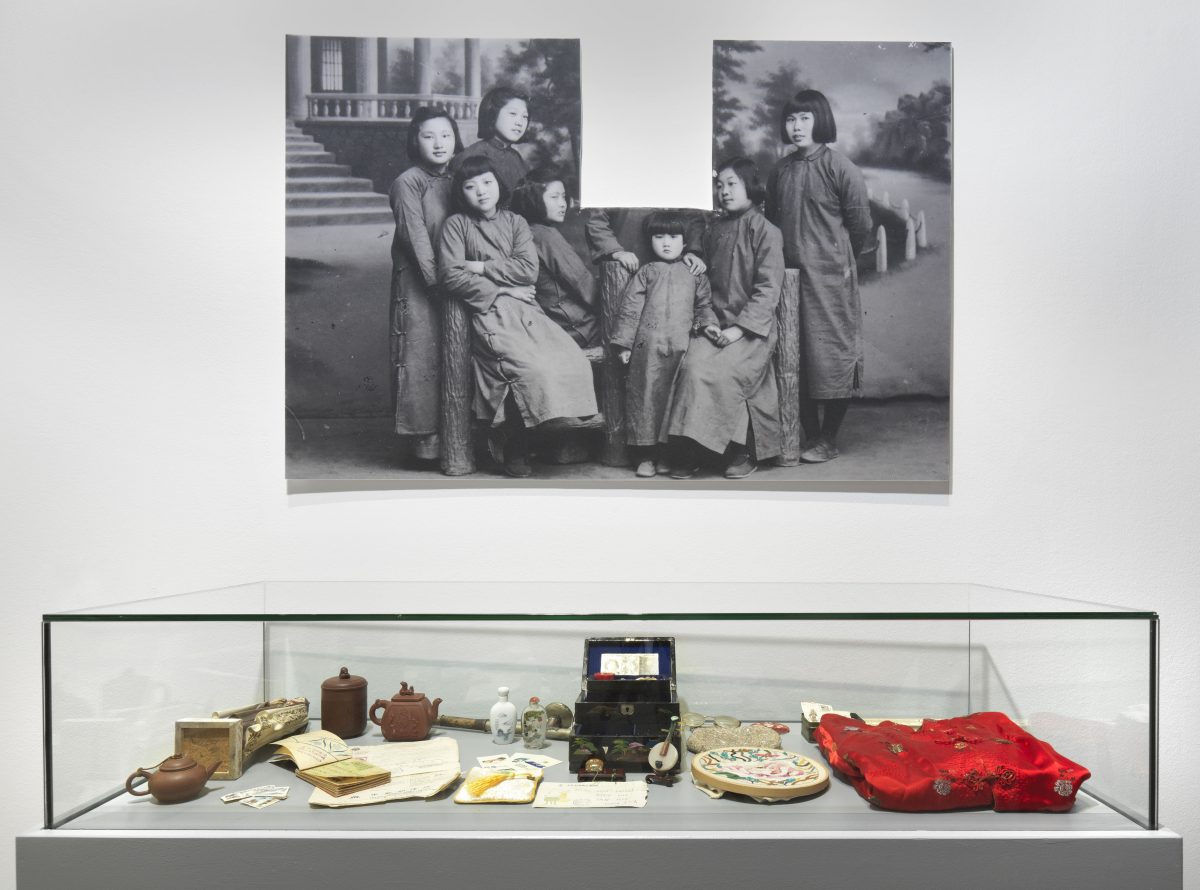On the occasion of the exhibition Más Allá, el Mar Canta (Beyond, the Sea Sings), at Times Art Center Berlin, the conversation with the artists Colectivo Hapa, Esvin Alarcón Lam, and Mimian Hsu, moderated by curator Pablo José Ramírez, revolves around an expanded notion of the Central American region, as understood by points of flux and diasporic encounters.
Más Allá, el Mar Canta aims to explore narratives of migration from China to Central America and the Caribbean as a starting point to consider systems of kinship and ontologies of intimacy. The artists’ work in the exhibition speaks from the conundrum of diasporic subjectivities, powered by either personal explorations or by collective motifs whose common ground is the always poignant reminder that there is no political imagination without community. The artworks in the exhibition are a unique testimony of an alchemic procedure that invokes agency from within the ruins of coloniality.
Colectivo Hapa is a contemporary art collective founded in 2020 by three Costa Rican artists of mixed Chinese or Taiwanese ethnic heritage: Jennifer Karczynski Tang, Karen Olsen Yu, and Anna Matteucci Wo Ching. Using a diverse range of mediums like drawing, installation, photography, and performance, they create an autoethnographic art process to explore topics such as feminism, power, and heritage.
Esvin Alarcón Lam (b. 1988, Guatemala City) is an artist interested in materiality and its relations with contemporary politics, and in the Chinese diaspora from a local perspective. Alarcón Lam is based in Guatemala where he organizes Pagoda Imaginaria, an independent art residency program. Among his recent exhibitions are Omniscent, Leslie-Lohman Museum, New York (2021); Mesotrópicos, MAC, Panama; Counterflags, Abrons Arts Center, New York (2021); This Might Be a Place for Hummingbirds, Galerie im Körnerpark, Berlin (2020); The Sun Teaches Us That History Is Not Everything, Osage Foundation, Hong Kong (2018).
Mimian Hsu (b. 1980, Costa Rica) is also Hsu Fung. Descended from Taiwanese immigrants who arrived in the 1970s due to the political relations between the island of Formosa and Costa Rica, her life and work are linked to this process of cultural hybridization and acculturation of the Chinese immigrant in the American continent.
Hsu has exhibited her work in the Vincent Price Museum, California; the Osage Gallery, Hong Kong; the Asu Museum, Arizona; and the Museo de Arte y Diseño Contemporáneo, San José, Costa Rica. She has participated in the VI Bienal de Artes Visuales del Istmo Centroamericano and received a honorary mention at the V Bienal del Caribe, Museo de Arte Moderno, Santo Domingo, Dominican Republic. Hsu directed the artist-run space Despacio from 2015 to 2017.
Pablo José Ramírez is a curator, art writer and cultural theorist living and working in Guatemala and Amsterdam. He is the Adjunct Curator of First Nations and Indigenous Art at Tate Modern. His work revisits post-colonial societies to consider non-Western ontologies, indigeneity, forms of racial occlusion, and sound. He holds an MA in Contemporary Art Theory from Goldsmiths, University of London. In 2015 he co-curated the 19th Bienal Paiz: Trans-visible with Cecilia Fajardo-Hill. Ramírez was the recipient of the 2019 Independent Curators International/CPPC Award for Central America and the Caribbean and is currently the Editor in Chief and co-founder of Infrasonica, a curatorial platform dedicated to the research around non-Western sonic cultures. Ramírez is part of the curatorial team of the Carnegie International 58th.
